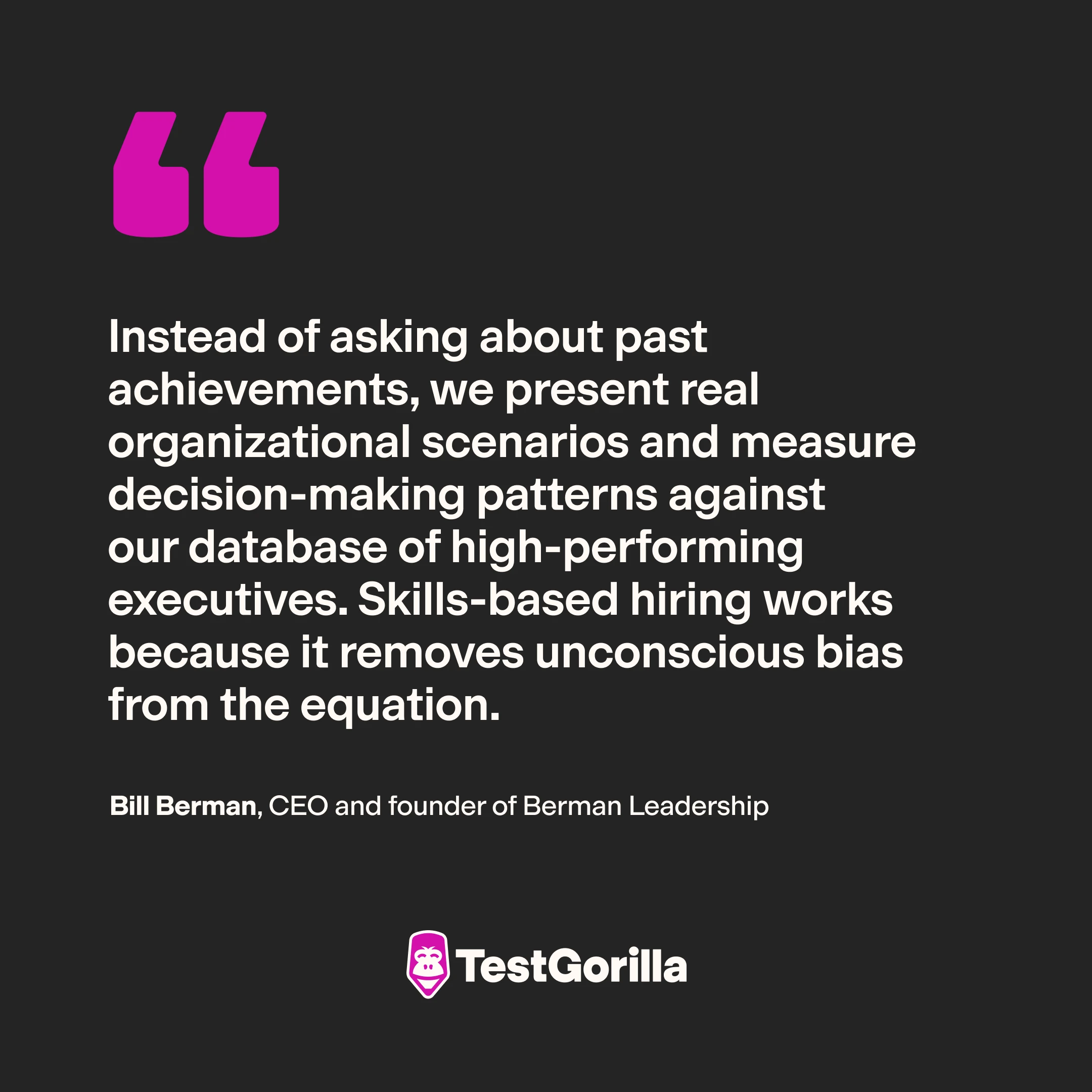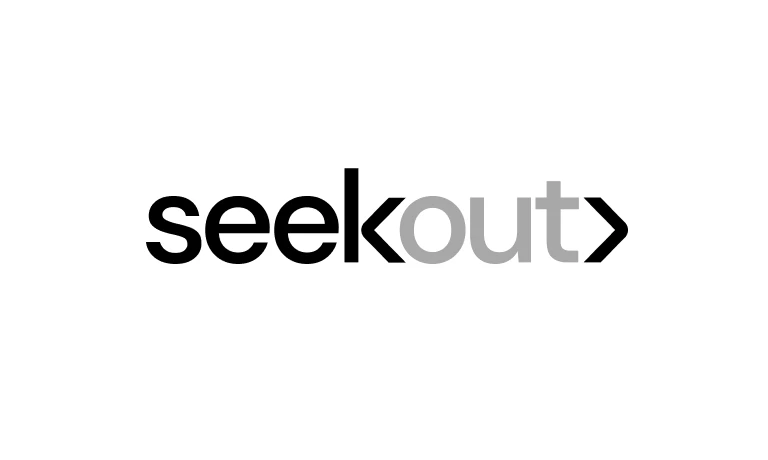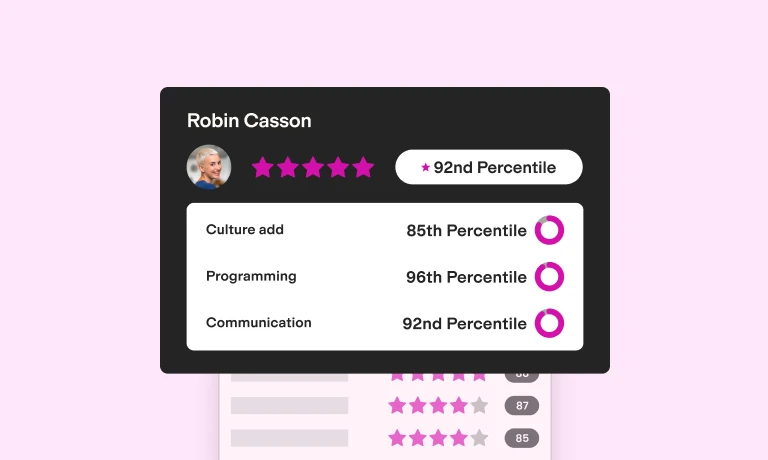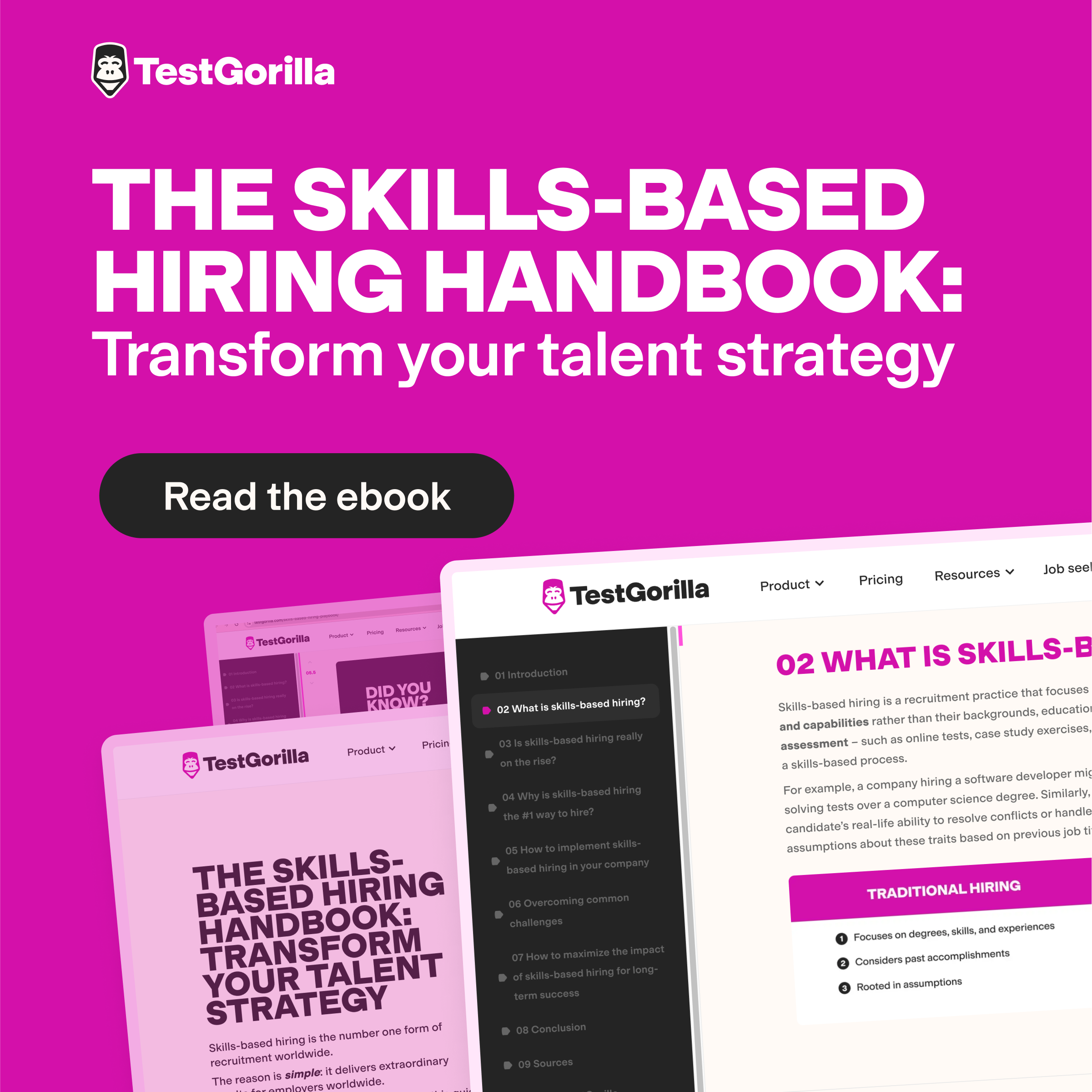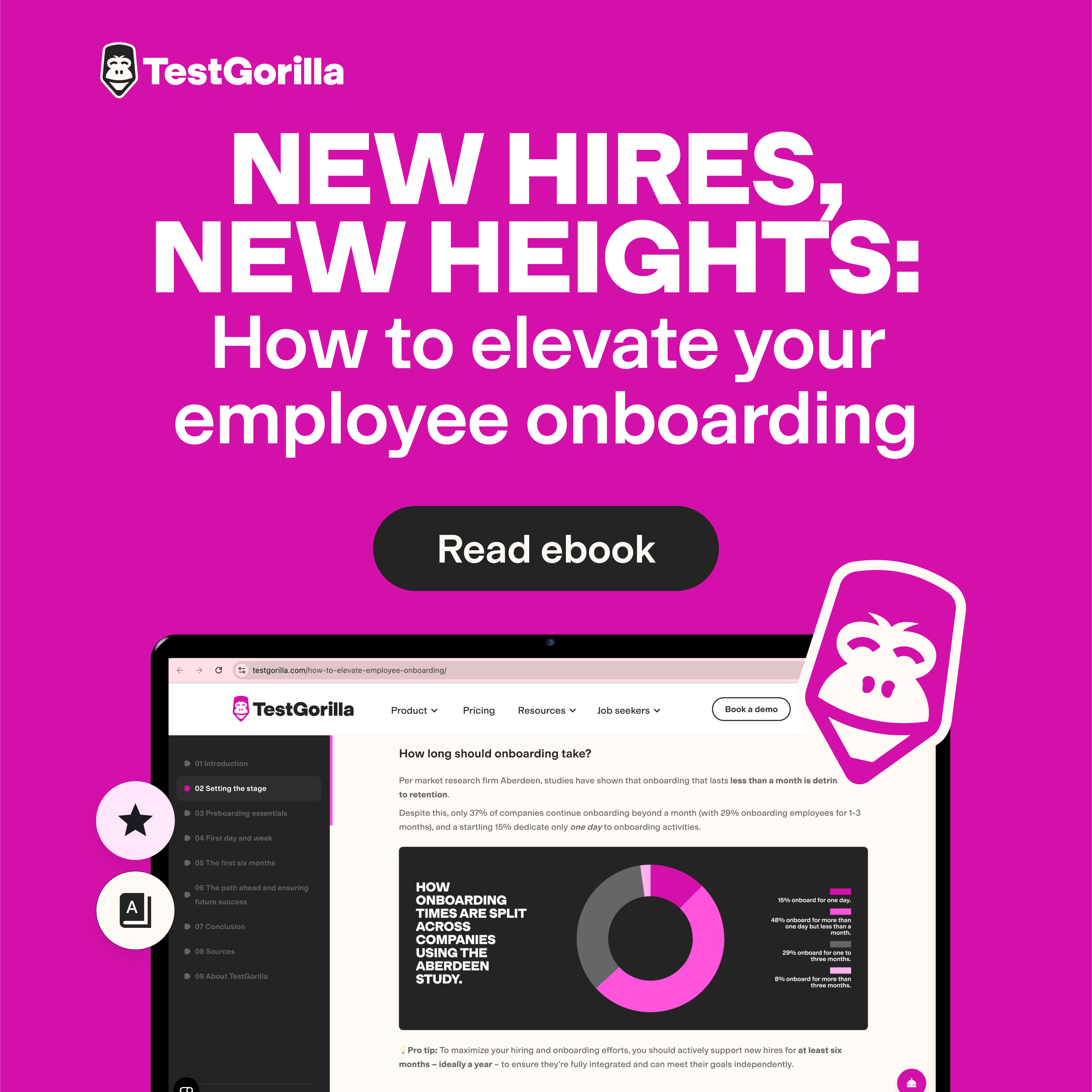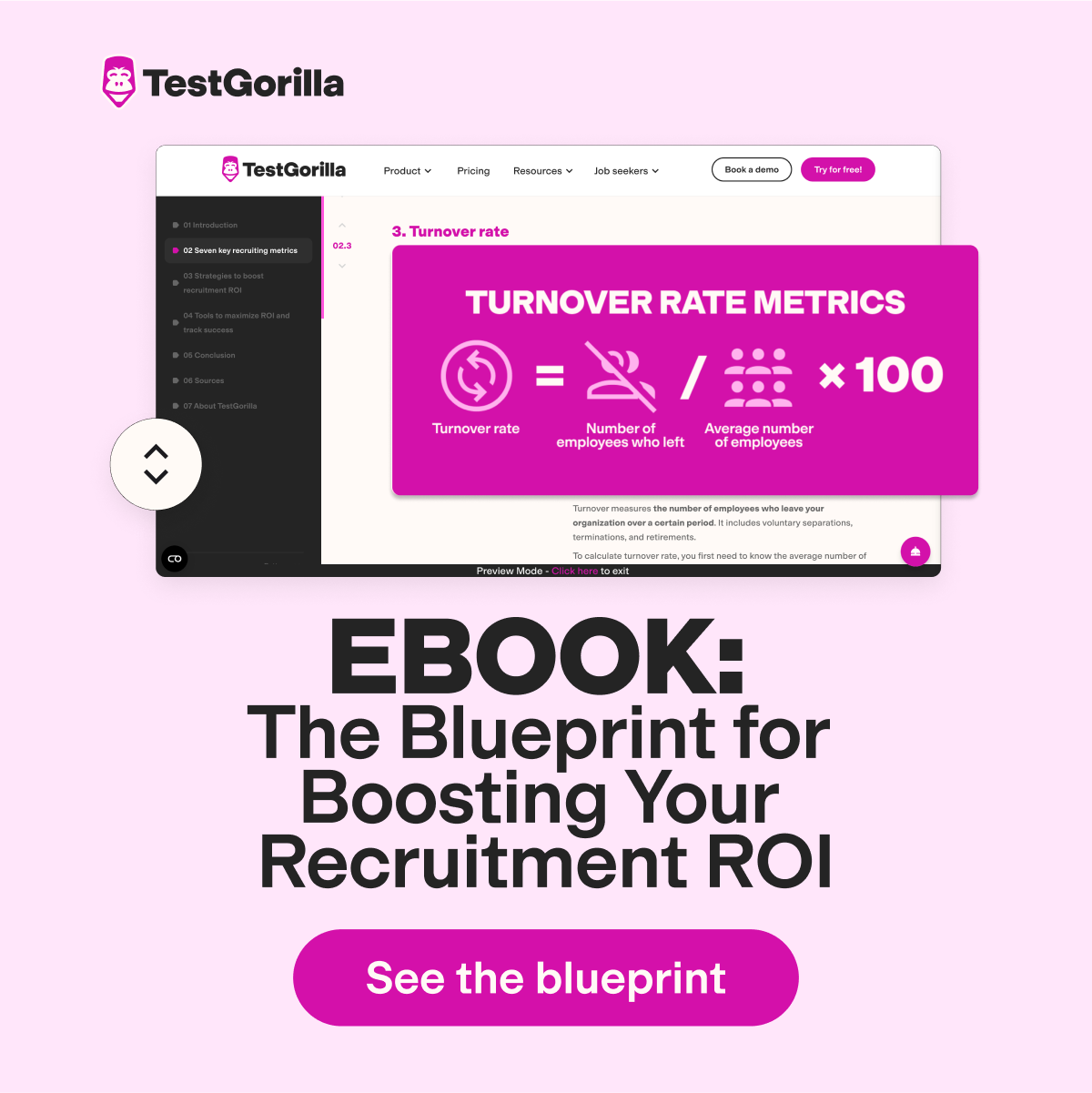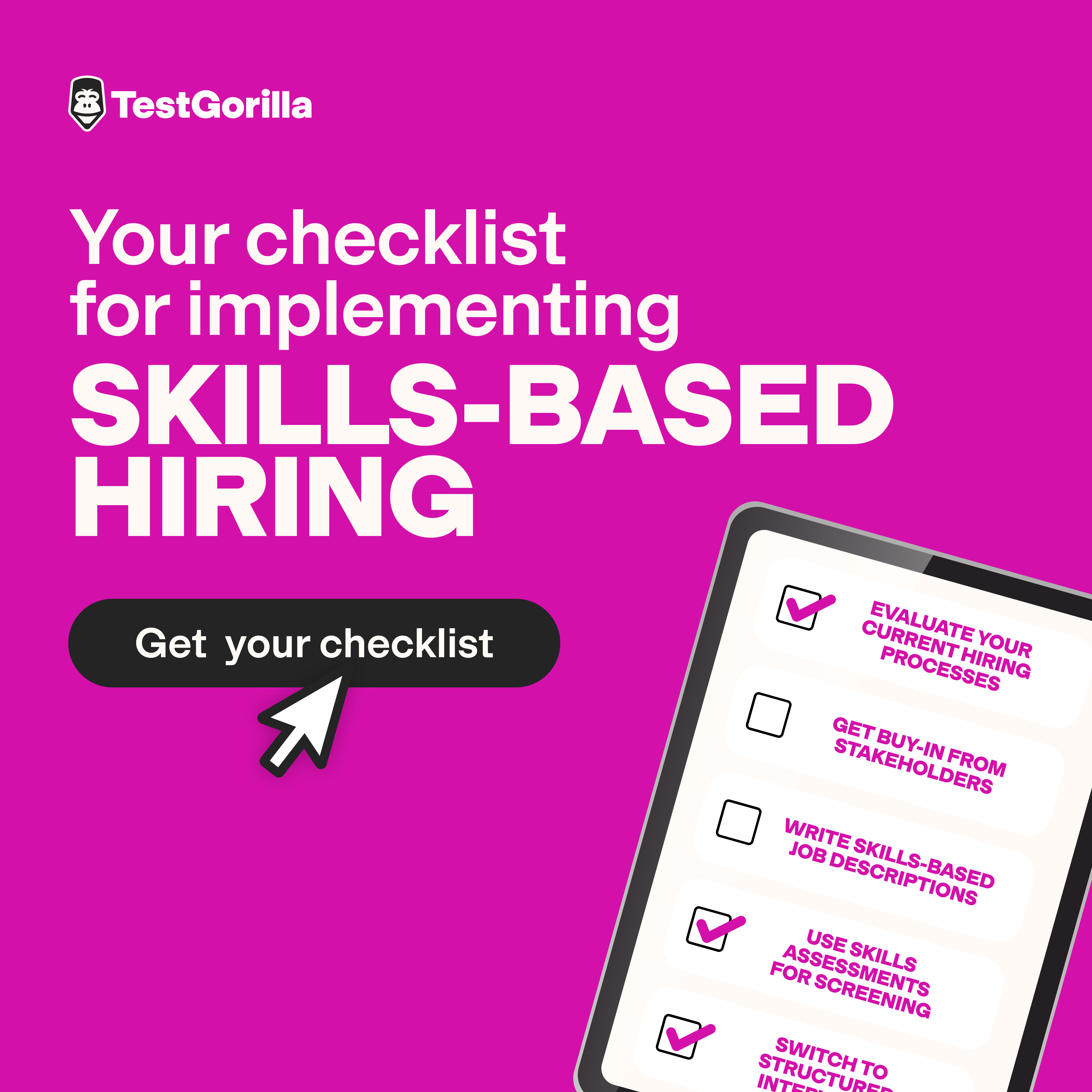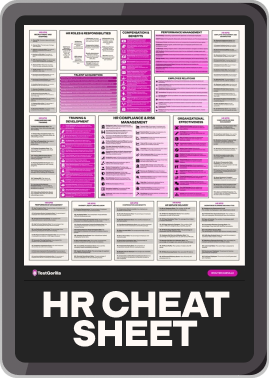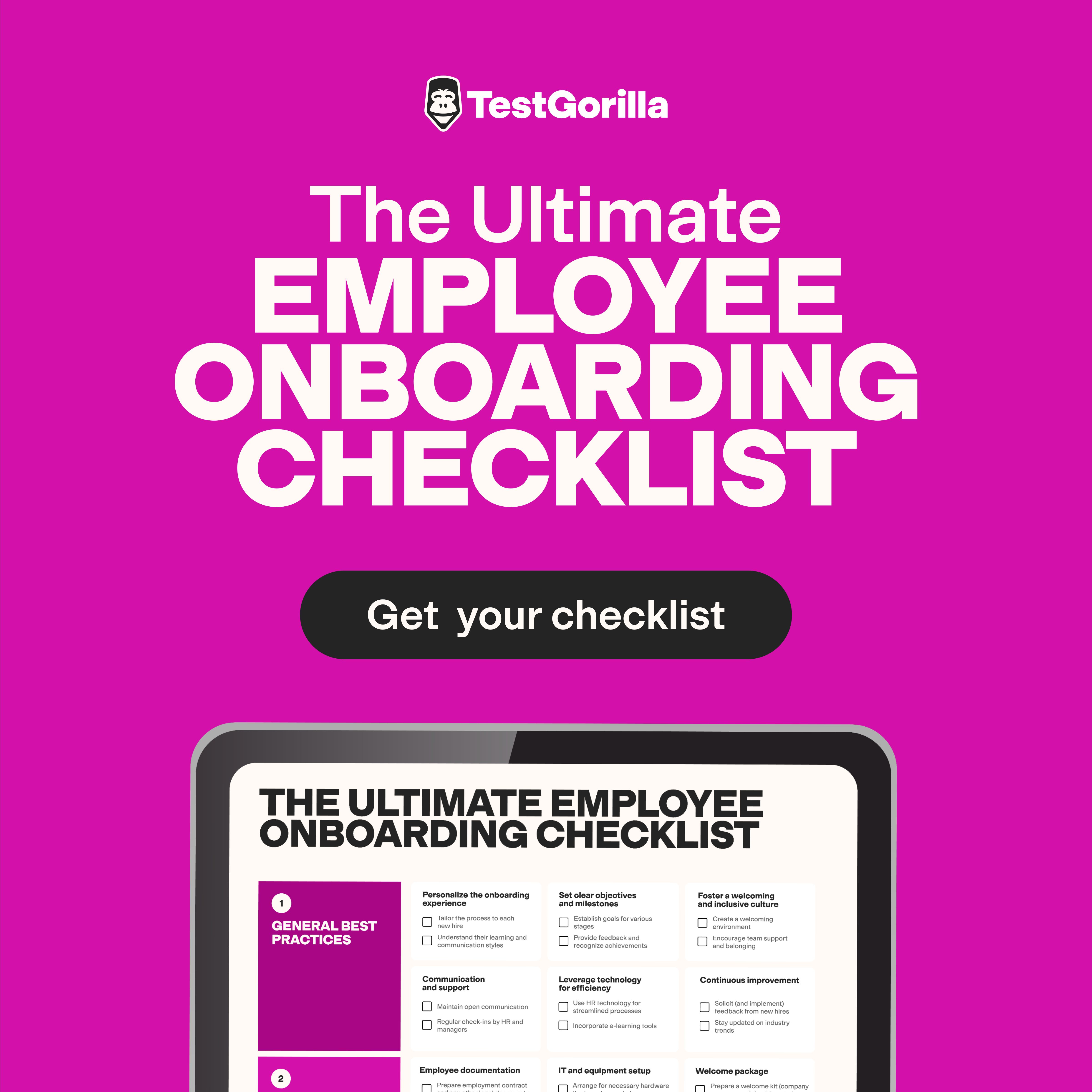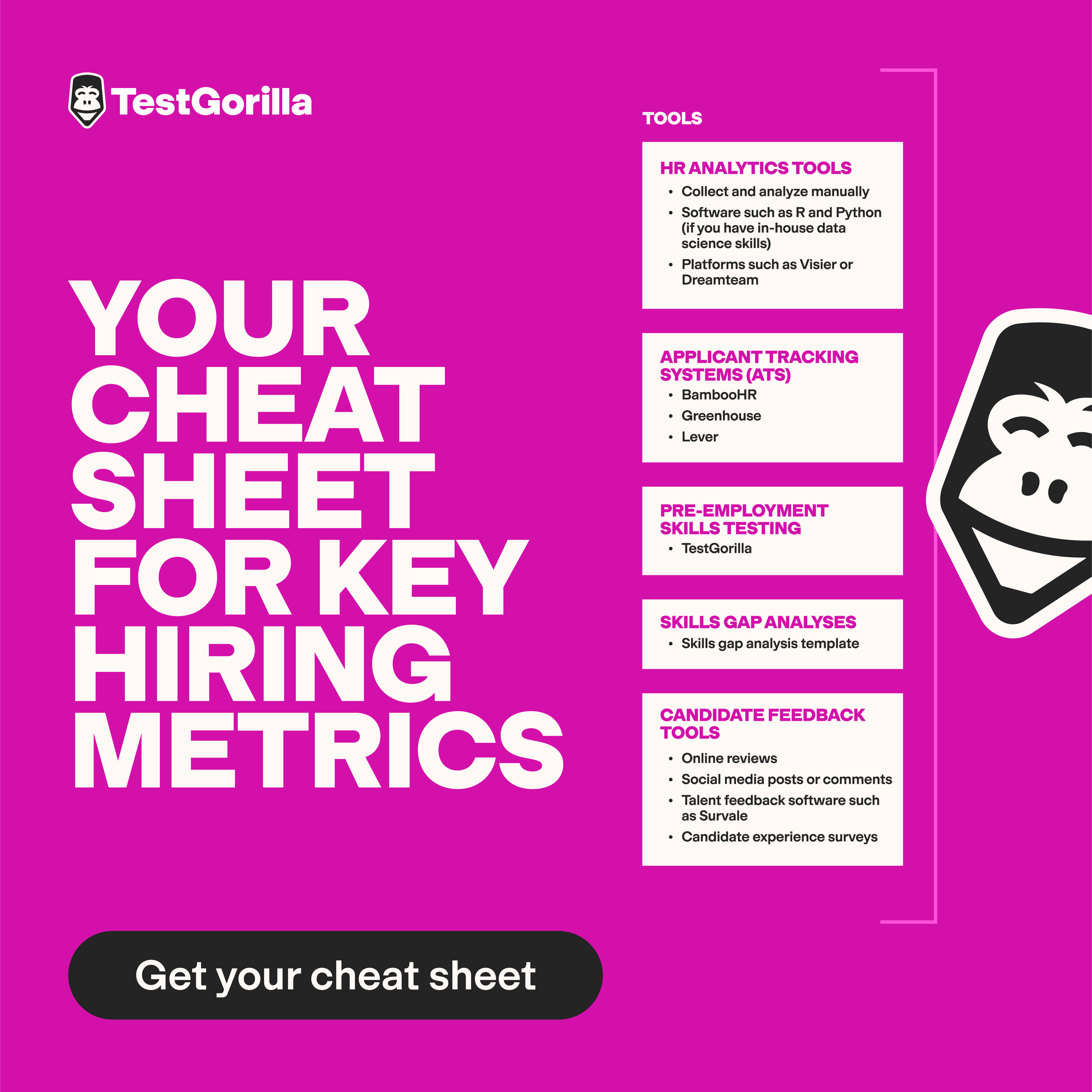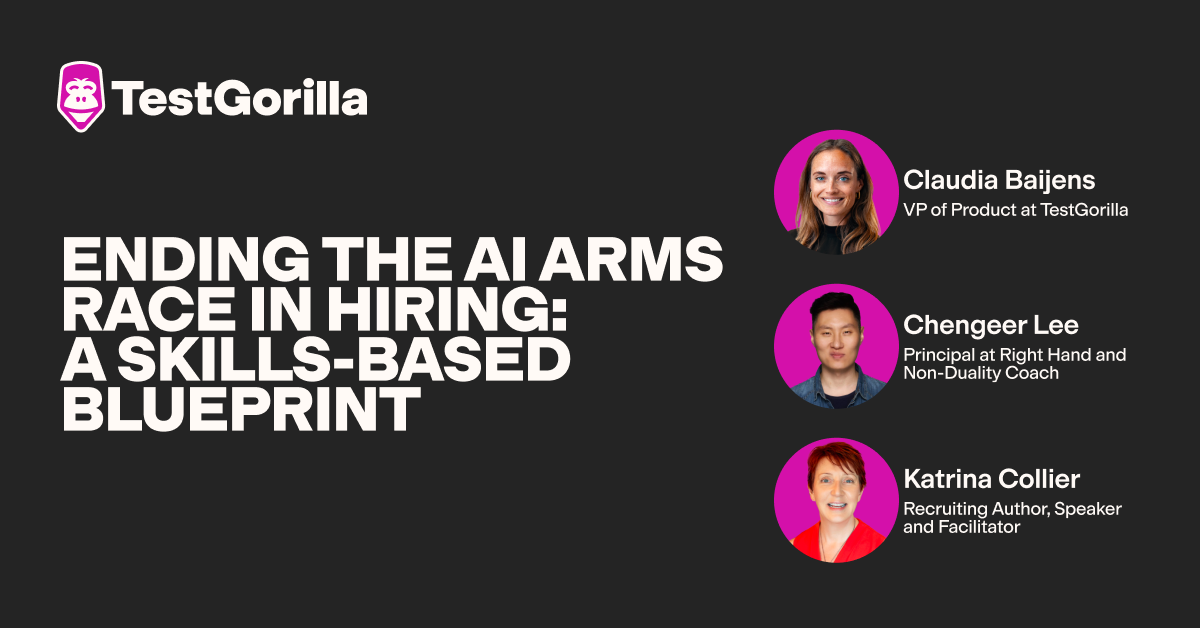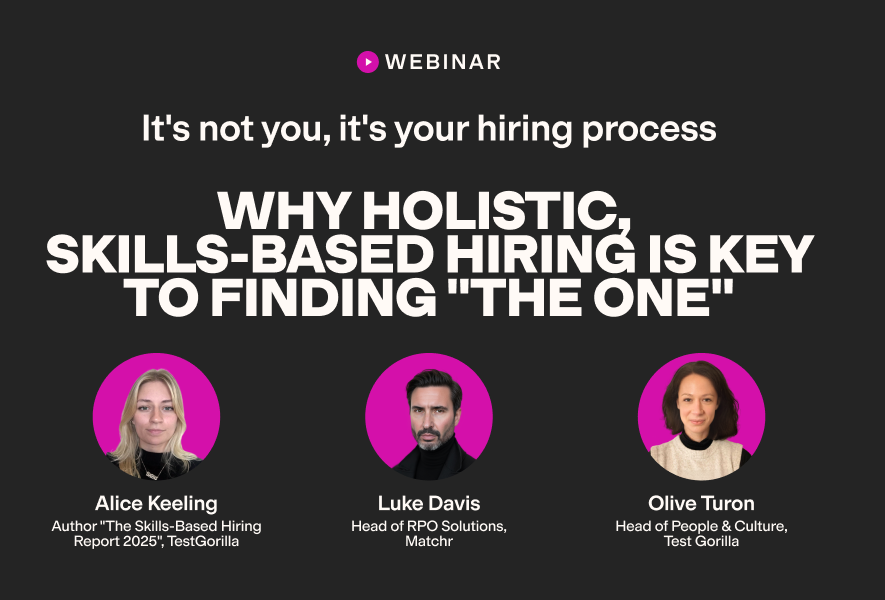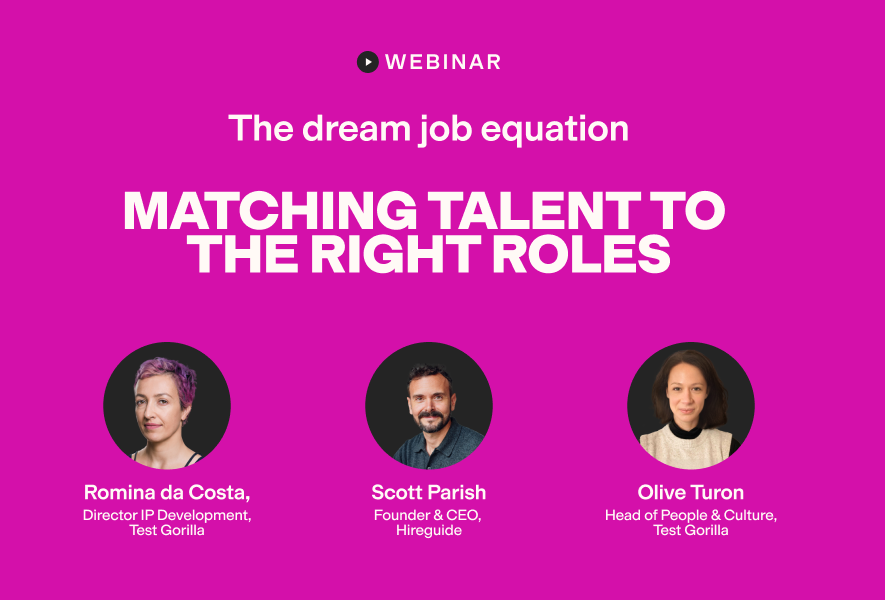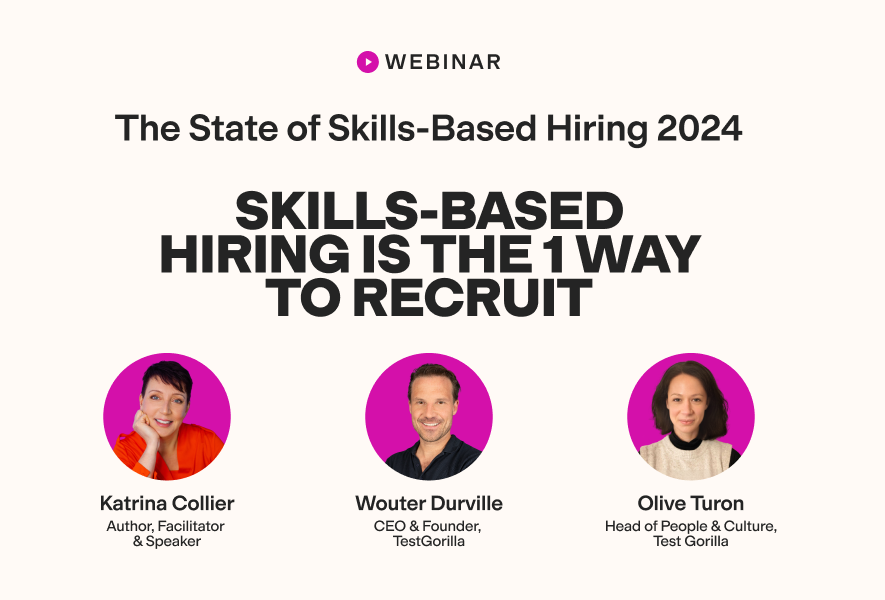Many companies know the pain: They pay $75K+ to an executive search firm, wait months, and end up with candidates who look good on paper but fail in practice.
And there’s only one explanation for why this happens: The traditional headhunting model is broken, representing a high-stakes, low-reward gamble. The future of executive hiring isn’t about who you know – it’s about what candidates can actually do.
Let’s explore how data-driven candidate sourcing and skills-based evaluations can help you cut costs, hire faster, and – most importantly – land leaders who actually succeed.
Why traditional headhunting keeps failing
Traditional headhunting operates like an expensive matchmaking service: You pay premium fees for access to someone’s personal network, hoping they know the right person for your role.
The process feels professional and thorough, but the economics make no sense.
According to executive search firm The Good Search, a headhunting firm’s fee is typically one-third of a candidate’s first-year total cash compensation. (For a $250,000 role, that’s $82,500.)
And then you wait – typically several months. All the while, projects stall and strategic initiatives get delayed. Team productivity suffers as people wait for leadership decisions. Company culture erodes, and high-performing employees begin to question whether they want to stay for the next leadership experiment.
The worst part? After all this time and money spent, there’s a chance you’ll end up with someone who isn’t a good fit. Why? Because traditional search doesn’t just move slowly – it also systematically narrows who you see.
The network trap
Most executive searches recycle the same candidates through the same networks. Consultants often rely on people they already know, such as former colleagues, classmates, and LinkedIn contacts.
This leads to an echo chamber of leaders with similar backgrounds, experiences, and thought patterns. As Eva Rode-Hilbert, Co-Founder and Director of ISE Partners, tells TestGorilla, “Referrals often come from similar networks, reinforcing existing demographics and missing out on exceptional talent from underrepresented backgrounds.”
When 63% of employers say finding talent is harder than ever, limiting your search to a consultant’s contacts isn’t just shortsighted – it’s dangerous. When leadership teams lack diversity of thought, experience, and perspective, they’re less likely to identify emerging opportunities, anticipate market shifts, or develop creative solutions to complex problems.
And the danger doesn’t stop with who gets into the pipeline. It worsens with how those candidates are evaluated.
The evaluation issue
The tools that traditional headhunting relies on to assess candidates are some of the least reliable indicators of true leadership success.
Unstructured interviews, which are the primary method used in traditional search, rank among the worst predictors of job performance. These conversations can feel insightful, but they primarily assess a candidate’s ability to interview well rather than their capability to lead effectively.
Tenure is another common but flawed evaluation criterion. Search consultants often seek candidates with specific years of experience in similar roles or industries, assuming that time spent in comparable positions translates to competence. However, studies show that tenure has a weak correlation with performance.
Informal cultural fit assessments, in traditional headhunting, involve casually chatting about values, working style, and leadership approach. While culture matters tremendously, these discussions often become exercises in finding people who think and communicate like existing leadership rather than identifying complementary strengths or diverse perspectives.
Reference calls from friends and colleagues round out the traditional toolkit. These conversations provide subjective opinions from people who may have limited visibility into the candidate's actual performance or who have personal relationships that bias their feedback.
The consequence
Networks limit who you get access to, and weak evaluation methods distort how you evaluate them. Put them together, and it’s little surprise that companies end up with expensive hires who underperform.
Which raises the key question: What replaces traditional headhunting?
The modern model: Data and skills
“It's all about what you can do, not where you learned to do it. That’s where the future is headed.” – Ryan Seeras, Senior Product Manager at Tomorrow University
Forward-thinking companies are replacing traditional search with a two-pillar model: Data-driven recruiting to source candidates, and skills-based evaluation to prove what leaders can actually do.
Data-backed sourcing
Here’s where the headhunting vs. sourcing comparison becomes stark.
Even the most well-connected consultants may maintain only a few hundred executives – and, as we’ve seen, those executives tend to be very similar. In contrast, data-driven recruiting replaces references with evidence of job fit and performance potential.
Companies use technology to filter candidates based on skills, experience, location, salary expectations, and other relevant factors. Then, they use predictive analytics, which flags candidates who show the strongest indicators of future success
Artificial intelligence (AI) takes this a step further. AI sourcing can widen the funnel by scanning millions of professional profiles across platforms, industries, and geographic regions.
Additionally, AI can identify patterns that humans may overlook. It can identify high performers who have taken unconventional career paths or developed expertise in unexpected ways. This is exactly how AI sourcing uncovers hidden talent and fights bias by focusing on performance indicators and capability patterns rather than traditional credentials or network connections.
Dillon Cass, CEO of True Home Offers, puts it perfectly: “AI seems to surface people with high adaptive intelligence, and that appears to matter far more for our fast-moving challenges than anyone's past job title.”
Skills-based evaluation
Skills-first talent sourcing abandons traditional proxies, such as alma maters, brand-name employers, and years of experience. Instead, it evaluates leaders directly on what they can do in your specific context.
And it isn’t just a theory: McKinsey found that hiring for skills is five times more predictive of performance than hiring based on educational background and twice as predictive as hiring based on work experience.
Modern skills-first leadership evaluations cover several dimensions:
Skills tests measure the technical, strategic, and functional abilities a candidate needs to succeed in your role today. It’s always best to combine multiple tests into one assessment for a more thorough understanding of each candidate.
Personality tests reveal how leaders make decisions and handle stress, so there’s no more guessing based on small talk.
360-degree feedback data provides a comprehensive view from multiple sources – such as peers, managers, and direct reports – rather than just glowing references from candidates’ golf buddies.
Structured behavioral interviews ensure every candidate is asked the same evidence-based questions about how they think, act, and adapt in different situations.
Real-world simulations put candidates in scenarios that they’d encounter in your company, so you can see how they think, decide, and influence under pressure. For example, you may ask a chief financial officer (CFO) candidate to analyze mock financial data and present recommendations for capital allocation. Or, you could ask a chief marketing officer (CMO) candidate to develop a go-to-market strategy for a new product launch, using your company’s resources and constraints.
“Instead of asking about past achievements, we present real organizational scenarios and measure decision-making patterns against our database of high-performing executives. Skills-based hiring works because it removes unconscious bias from the equation.” – Bill Berman, founder of Berman Leadership Development
When you combine these evaluation methods, you get a multidimensional view of leadership potential that references and resumes simply don’t provide.
The best insights on HR and recruitment, delivered to your inbox.
Biweekly updates. No spam. Unsubscribe any time.
Building your own executive hiring machine
The smartest companies are building a direct sourcing machine that saves money and scores them better talent.
TestGorilla Sourcing gives you instant access to more than two million skills-tested professionals globally – a living talent pool that grows by more than 100,000 new profiles every month. Instead of waiting months for a search consultant to work through their limited network, you can find qualified executive candidates in seconds.
Here’s how it works:
Set your criteria, get instant matches: You can use advanced filters to pinpoint candidates based on specific skills, experience levels, salary expectations, and location. TestGorilla's AI instantly surfaces profiles that match your leadership requirements, so there’s no more manual resume screening or guessing about capabilities.
Review pre-assessed talent: Every candidate in the TestGorilla database has already completed skills assessments across "350+" validated tests. You can immediately see their cognitive abilities, leadership competencies, and role-specific skills before making any contact.
Connect and evaluate directly: You can reach out to promising candidates with interview invitations or send additional evaluations. You control every aspect of the process – timeline, candidate experience, and evaluation criteria – without depending on an external search consultant's schedule or preferences.
This turns executive hiring from an expensive gamble into something you actually control.
The results speak for themselves
The business case for modern headhunting approaches continues to strengthen as more organizations adopt these methods and measure their impact.
TestGorilla's State of Skills-Based Hiring 2025 Report shows exactly how well this has been working:
71% of employers say skills testing predicts performance better than resume screening
76% of organizations now use skills-based tests when they hire
84% are happy with the people they hired using assessments
60% fill roles faster with skills-based approaches
67% make fewer expensive hiring mistakes
In other words, companies that get good at skills-based executive hiring build a real advantage. While competitors continue to struggle with expensive, hit-or-miss search firms, these organizations consistently secure better leaders.
Take control of your organization’s future
The future of your company depends on the leaders you hire today. You can lead the transformation now, or wait until competitive pressures force you to change – at which point you’ll be at a big disadvantage.
The evidence supporting modern methods for sourcing executive talent is already overwhelming, and the sourcing tools already exist to change your approach right now.
Platforms like TestGorilla give you access to millions of pre-assessed professionals and the ability to evaluate candidates on proven capability, not just connections or credentials. Try TestGorilla for free and start transforming your executive hiring today.
You've scrolled this far
Why not try TestGorilla for free, and see what happens when you put skills first.



